Here, Rodney Lee, Senior Product Manager, Aerospace & Defence Business Unit, IFS, explains the intricacies involved in extending an asset’s lifecycle and how organisations can keep life extension projects on schedule, within budget and meeting strict safety requirements.
There is an increasing trend in military organisations to extend the lifecycle of aircraft and other equipment.
Witness the US military extending the lifecycle of the F-16, B1-B and B-52 for decades at a time and as I write this article negotiations are ongoing for Canada to purchase 25 used F-18 fighter jets from Australia—delivery is expected in 2019.
High costs of new assets trigger life extension programmes
There are multiple drivers in today’s military environment that are influencing which assets are targeted for lifecycle extension. One of the primary factors is the cost of new equipment. For a lot of modern fighting forces, the procurement focus has been on next-generation equipment such as the F-35 fighter jet. This leaves little budget for procurement of other equipment and means looking for cost-effective ways to stretch more service from existing assets.
Politics and complex decision-making play their part
Changing political climates between countries play a key role alongside uncertainty about future equipment requirements. Any procurement project is a complex decision and requires a whole network of stakeholders to agree on a strategy. This complexity leads to decisions taking longer than the people who operate the aircraft would like.
The result is usually to buy time and maintain military capability by increasing the lifecycle of existing in-service equipment. This has been evident in Canada, where the Canadian Government has extended the life of its F-18s to 2025—making the equipment over 40 years old and, as I mentioned earlier, is on track to add 25 more.
These factors combined explain why the US DoD is extending the lifecycle of the B-52 bomber—first introduced in 1954—well into the 2040s.
Likewise, in 2016, Russia announced an upgrade to its fleet of Tupolev Tu-22M3 Backfire intermediate-range bombers with new engines and avionics—with these being delivered in April 2018.
The four key maintenance and support challenges of lifecycle extension programmes
There are some key pain points when retrofitting, upgrading or customising an existing military aircraft—regardless of the role it serves and the people who operate them.
- Airframe life extension means tracking new data
The first obvious challenge when extending an asset’s lifecycle is maintaining safety and structural integrity for the additional time period it is required to operate. This is critical when talking about airframe modifications, which can be split into two categories of challenges.
Firstly, upgrades. When looking at aircraft extensions, the starting point tends to be airframe and avionics upgrades. The B-52 is a classic example of this with its multiple new skins and airframe alterations, designed to increase payload capacity introduced over its lifecycle.
Secondly, fatigue life must be taken into account. Flying an aircraft for as many years as possible means many flying hours have been accrued, with the intention of adding more. Significant fatigue life analysis must be done in order to understand that the aircraft can withstand the extra flying hours. When aircraft are changed structurally, this brings new considerations for maintenance checking, including fatigue monitoring.
Old programmes meet new tools
These heavy upgrade programmes are extremely complex, so must be managed effectively. Airframe extensions mean introducing new measurements and new components. There are often struggles to manage this additional information, but better data analysis and planning tools can improve the safety and efficiency of airframe upgrades. So good data collection and analytics are vital requirements of supporting software.
Modern capabilities of instrumentation, simulation and computer monitoring have often been developed years after these aircraft have entered service—and these tools are getting better every year. Supporting software is now much more sophisticated than the software operating on these legacy platforms. These supporting capabilities and software can and should be retroactively introduced during a life extension programme to provide operators with the tools to track, analyse and manage the extra complexity of airframe modifications and fatigue life.
- Spare parts availability—getting down to the last rivet requires a 360-degree view of the supply chain
As a large number of aircraft must pass through the maintenance depot during an extension programme, spare parts availability and integrity becomes critical to keep maintenance safe and on schedule. Maintenance crews need the right part in the right place at the right time, or face delays on upgrade projects. Some of the key components which need repair for stress fractures go right down to individual rivets and winglets.
If we then look at the significant upgrades required on a long-serving asset such as the B-52, we can see this becomes even more complex—new skins and armaments require retrofitting which can lead to significant structural issues.
Make it or fake it?
The older an aircraft gets the more complex this becomes, as suppliers cease trading and the supply chain becomes less reliable. With spare parts no longer available from the same sources, this often leads to creative sourcing needs and new internal repair capabilities. Sifting through websites for nearly obsolete spare parts is not an efficient use of military time and resources.
The US Office of Naval Research is currently implementing the Quality Metal Additive Manufacturing (Quality MADE) programme to enable cost-effective, on-demand production of 3D printed metal parts for use in maintenance, repair and overhaul (MRO). When this type of technology hits the supply chain, it brings new potential quality and safety questions. With 3D printing and the increased proliferation of counterfeit parts, how do you track and validate every component’s history?
Take control with increased visibility
Building control and visibility into a supply chain becomes mission-critical—understanding where potential spare parts ‘choke points’ are going to be is important. Decision-makers need to know what the lead time on parts is and that the part they are fitting is safe.
Maintainers also need access to reliability history, to inform unscheduled maintenance demands. They must know what the implications of any delay will be. A lifecycle extension programme needs to rely on an integrated approach with a system that can span the complexity of a supply chain to tie all these parts demands into one place.
Ensuring an integrated approach across the supply chain is key. This is not an unprecedented challenge, militaries and defence contractors all over the world are used to dealing with large supply chains and there are processes and software tools which have already been developed to manage such complexity. The key is to make sure an extension programme is in line with these new processes and you aren’t relying on legacy approaches to manage new challenges.
- Scarce resources—skill transfer a must
The military is one of the most effective organisations at recruitment and training of new personnel. It has to be. Even so, as equipment ages, so do the maintenance engineers who keep them operational. Declining transfer of knowledge means a large proportion of key maintenance processes are being lost—opening up a problematic skills gap.
At the end of FY 2017, the US Air Force alone reported its total fleet size was 5,400 manned and unmanned aircraft of various ages, conditions and responsibilities. Yet in the same year, the top job on the Air Force ‘Stress List’ was in the “Mechanical Aptitude Area.” Private companies which provide aircraft readiness through in-service support contracts are encountering the same pain point.
The role of software in sealing knowledge inside a military force
Current military software systems and processes do not support the retention of tribal knowledge. However, significant developments in commercial software tools over recent years have brought new capabilities not available only a few years ago. In the short-term, point solutions such as augmented reality are coming to the fore to bridge the gap. IFS is already working to deliver IFS Applications on Microsoft HoloLens head-sets to support real-time one to many knowledge transfers from experienced technicians to newer recruits.
In the long-term, supporting software must be designed to institutionalise tribal knowledge. Incorporating maintenance history into maintenance systems ensures that the lessons learned stay learned and component history can be tracked from cradle to grave.
The ripple effect of this becomes a rolling repository of maintenance knowledge and expertise. Any new engineers, or those who move from one project to another, will have this knowledge at their fingertips.
- Executing a programme—maintaining force capability and capacity
As the volume of maintenance increases, how do military organisations balance the number of required sorties with the need for aircraft to also enter the maintenance hangar?
To upgrade a whole fleet may take years, with aircraft in and out of repair on three-month rotations. One flight training school IFS has spoken to is looking to move 17 trainer aircraft through an extension programme in 12 months. This needs detailed planning, as availability must be maintained during these periods—there must always be aircraft operational for exercises and missions. Military organisations and maintenance contractors must balance availability with major overhaul demand and more trips to the maintenance depot. You can’t avoid these visits, so they need to be optimised.
There’s no hiding in the hangar—analytics vital
The higher the maintenance demand, the more critical it is to make sure work is planned, scheduled and executed optimally. In one organisation IFS now works with, knowledge of when an aircraft would be returned to operational status was previously fed back to a Commander in the form of percentage of completion and a rough date estimate. This was based on talking to mechanics and tribal knowledge of individual aircraft.
The same organisation has now gone through a process to standardise documentation and digitise all maintenance work orders to track part status and task completion. The same Commander can now predict to the hour when an aircraft will be available and has seen double-digit percentage reductions of aircraft time in hangar.
This is the level of visibility required to track the performance of large-scale upgrade projects, which can take years to complete, and will bring time and cost savings. But more crucially, with most of these assets still playing a key strategic role in military operations, Commanders can rely on an accurate status of equipment when mission planning.
Kiss of life for key assets
Given market, political and cost fluctuations, fleet life extension isn’t something that will go away. It is now a key consideration for military procurement and asset management.
Extending any equipment beyond its intended service life is a process that needs to be properly managed and delivered. As we can see, it is a complex process and there are many potential roadblocks—all of which can be navigated with the right approach to managing these projects. Those who act quickly and take control of these projects with the right organisational processes and software support will reap the rewards of increased efficiency, safety and force readiness.
 |
Rodney Lee
Sr Product Manager, Defence Aviation Product Line, Aerospace & Defence Business Unit, IFS. Rodney is responsible for delivering solutions that solve problems for the global defence aviation market. He has been a member of IFS for one year and has helped to instil trust in our defence community with domain knowledge and experience. Prior to joining IFS, Rodney worked as a Product Line Manager in commercial aviation products for Rockwell Collins. Before this he spent 14 years in the US Air Force, 8 as an Avionics Technician and 4 as a Training Manager. |


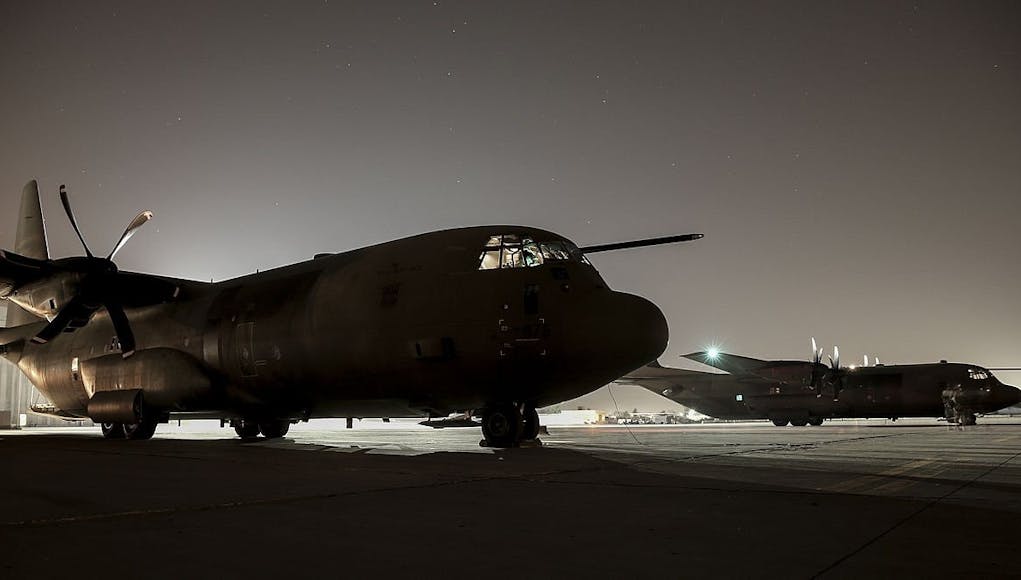
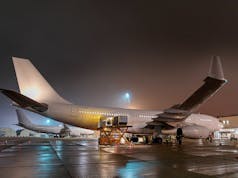

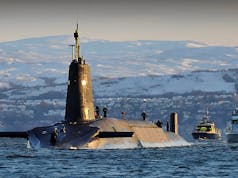
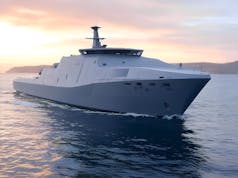
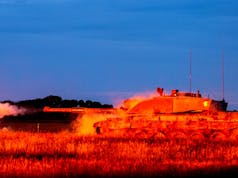

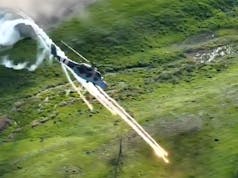


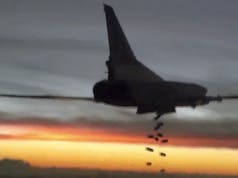

It’s an interesting debate, I actually think life extensions end up costing the government more in the long run and are usually required due to poor government planning where the treasury has delayed decisions. Industry relies on consistent orders to maintain capability and when that is lost through short term cuts it usually ends up costing more when it does get replaced on top of the 10 year life extension cost. Astute and T26 are recent examples.
The cost of refitting the T23 is half the cost of replacing them with a T31, add in the cost of the R2’s OPV’s and we could have ordered 8 more capable T31 for £350-£400mm each and entering into service now (with glued on bolts) rather than is 2023.
Amen
I’m not Philip Hammond or George Osbourne TH as much as I wish I was.
TH: because he is not omnipotent.
Not really a fair comparison, the t23 whilst old is likely to still be significantly more capable than a t31. You need to compare against t26 prices.
the u.k. spends£16 million per year on the retired swiftsures at devonport and rosyth. surely they could still generate electricity to supplement the u.k electricity grid
Good article. IFS have been working in the A and D domain for many years, I’ve seen their products in use over the years and have been impressed with the capabilities.
The UK still has 5 short body (4 airworthy) C-130J. As the RAF will probably only have 9 P-8, I doubt they will be able to spare them from ASW, for Ocean Patrol/SAR.
I think it might be economic to fit those 4 or 5 C-130J with new wing boxes + surface search radar + EO turret, for simple Ocean Patrol/SAR duties.
Totally agree, and aren’t the RAF p-8s also taking over land surveillance capability tasks also when we retire the sentinel R1 aircraft. We need far more than 9 p-8s and the government have been advised we need 7 more p-8s to carry out the duties we expect them to do. We should convert those C-130j for long range simple patrol/SAR missions and that would free up more P-8s for high end duties.. We already have the planes and pilots and training ect and could be up and running in a year or so if given the funds to add the hardware needed to the planes.
The short body herc is predominantly used by the SF community.
I thought the underwater knife fighters had moved to the 13 long body C-130J.
Yes, the long body Herc can carry more vehicles, however the short body Herc has a shorter landing and take off distance so is useful in austere places.
The short body Hercs are also the ones that would need to be converted to KC-130 standard. I think we’ve made a big mistake selling some of them off. All KC-130’s to date are short bodied.
Jordan was gifted 13 Hawk Mk 63 by UAE. Jordan did not need them & put them up for sale in 2017. Did they sell? If not, could they be bought cheaply by the UK for RAF Red Arrows or RN 736 sqn to replace ancient Hawk T1s?
Your point being?
Given a very limited defence budget, the UK either lets capabilities fall apart due to old age & drift, or our procurement becomes agile & takes advantage of bargains as they occur.
The modernising defence plan is due to be published before Christmas. Not holding my breath for vast new spending.
B52 ring any bells? They will be fossilized before long, yet still flying? With the introduction of new lightweight alloys and carbon fibre technologies, make it more likely that equipment made of such materials should, in theory, allow for significant life expectancy?
we can do this on most of our kit, but you need to have the main suppliers support. BAEs did a life extension on the harrier airframes and them removed it. in a chest beating contest with the UKGov. who in turn dropped all BAEs contracts. with the US suppliers they dont play these games …..
Are the British RAF typhoons going through life extension programs or where they scrapping the older models in the scrap to build bollocks? If they are being scrapped we should atleast sell the ones with years left in the air frames instead. Or is it so we can sell new shiny expensive ones to potential customers. But Surely we could sell second hand RAF typhoons to poorer nations who can’t afford new ones and offer them suport packages and training ect, that surely would help out the country more than just scrapping them and could open up a new market for ex cheaper RAF typhoons.
Khai su technon?
I see the USMC are making updates to their AV 8b + including new helmet mounted cueing system and intend to keep them flying till 2025.
Its a waste of money in the main, we are better working assets hard and getting rid of them. The Merlin updates just completed cost as much as a new one… and the cost of warrior upgrade now exceeds the cost of a brand new boxer.
I think we need to manage the lifecycle of assets more carefully and right size from the beginning.
The RN probably does need a corvette instead of T31 – say something in the 70-90m range that can realistically be manned by 60-80 personnel and be cutting edge (C-Sword 90) and then end up on fisheries duties around the UK in it later years or in Gibraltar or the falklands with a crew of 35-45.
How we manage the lifecycle is probably more important than life extending. I would sell them off once we have had our fill. Some of the life extension costs are just mouth-wateringly high.
Bake sale? Car wash?
TH why do you ask every single person the same question when you clearly know they are not decision makers?
Will you tell him or shall I, Master? It’s time he and the other earthling’s knew the truth.
LOL!
if the carriers are to give 50 years service then all military projects should have longevity of service as one of the design points, get more use
Is it just me or would the life cycles be better managed if we actually took delivery of all the assets we initially want?
If we’d taken delivery of all 232 Typhoons for example, or all 12 Type 45 destroyers, then each airframe and ship would end up with fewer miles on the clock and less wear and tear.
Perhaps not with aircraft as we have a massive fleet of spares, but certainly ships.
Oh Steve.
Don’t forget in just about every defence review of the last 20 years I have read the same rubbish from MoD, DS, and even serving chiefs FFS fretting over their pensions no doubt.
Smaller “leaner” military because of cuts, meaning HM forces will be more “Agile” and more “capable”
Of interest to TH I’m sure, I have written to MoD and sent numerous FOIA over the years suggesting that LESS of everything is not agile at all but hamstrings the military for the very reasons you mention.
Little or no reserve. Unable to be in two places at once. Same kit and men used repeatedly because there is no slack resulting in worn out assets.
So no it is not just you it is totally sensible to me but for their own reasons HMG and HM Treasury have other ideas….
Im down. Ill bring the cakes
I will eat them
TH, I do contact my MP and the minister for defence on a regular basis, but (and perhaps you should take note of this next bit), there is a fine line between making a point that resonates with someone and just becoming noise because you are saying the same thing.
Additionally, you are making the assumption that forums like this have no input, I assure you that is wrong. The designation of the T31 frigate was first raised on Think Defence and several other ideas raised on this and other forums do make it into the corridors of power.
Never underestimate the power of a forum like this in shaping attitudes.
Pac he or she is not listening.